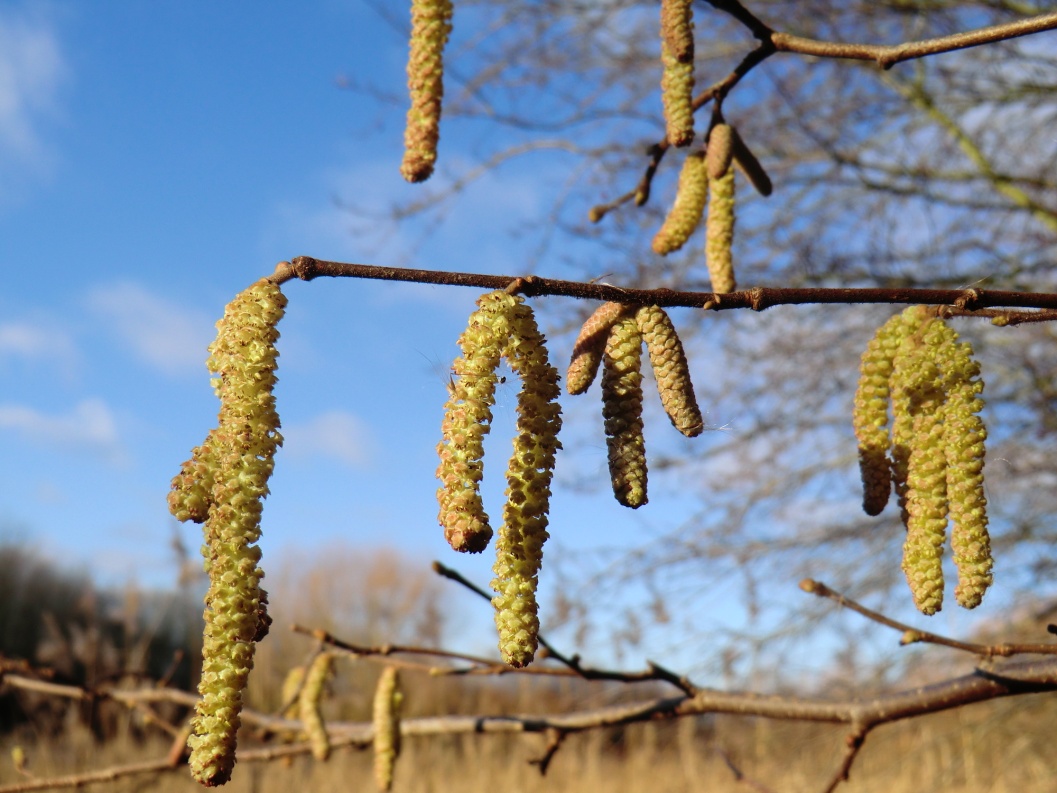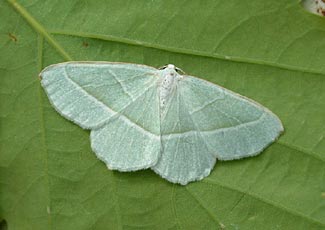Continuing the woodland theme this week, volunteers were out on 3rd March to do some more woodland management, but this time at Roundshaw Woods.
Roundshaw Woods is predominately oak woodland with an elm, field maple, blackthorn and hazel understory. This week, volunteers were keeping up with some of the regular coppicing work that is done on the hazel trees at Roundshaw.
Hazel (Corylus avellana) is a deciduous tree that is common throughout the UK. It is perhaps best identified by the long yellow catkins’ it produces, which hang in clusters from their branches. Catkins or ‘lamb’s tails’ (as they are sometimes called because of their resemblance!) are the male flowers of the tree that emerge at the first sign of spring. However because they emerge so early in the year they rely on the wind for pollination, rather than insects.
Hazel leaves are also an important food source for many species of moths, such as the large emerald moth (Geometra papilionaria) and the small white wave (Asthena albulata). The caterpillars of these species rely on hazel as one of their main food plants during development.
Hazel is an extremely useful tree; it has traditionally been harvested for use in hedgerows and fencing, as its stems are both durable and flexible. As a result the stems can be easily woven and bound to make binders and stakes in hedgerows. As hazel grows quickly and is able to produce multiple stems, it is used extensively for coppicing.
This week volunteers carried out the traditional woodland practice of coppicing, which involves cutting trees and shrubs near to the ground to promote rapid re-growth. Coppicing alters the age and physical structure of the hazel in a way that provides opportunities for typical, native species to exploit. The young thin stems that grow back allow a lot more light to reach the ground, which can help spring and summer perennials such as bluebell and dog violet, respectively, to burst into growth. The area surrounding the coppiced hazel areas provides open, flower-rich glades that benefit many fritillary species of butterfly that feed on dog-violets found in recently coppiced areas.
The coppicing work carried out by volunteers at Roundshaw will not only provide us with some excellent hedgelaying material but will also provide better opportunities for some local, native species to exploit and maybe attract rarer species such as the Silver-washed fritillary (Argynnis paphia).
Eleanor Kirby-Green
SNCV Biodiversity Assistant









